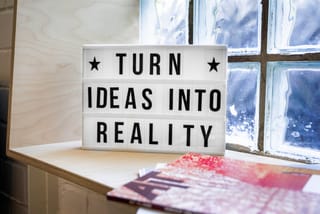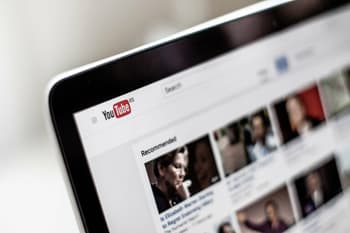Table of Contents
- What is Copyright and How Long Does it Last?
- When Does My Video Lose its Copyright Protection?
- Fair Dealing vs Fair Use
- Can I Use Copyrighted Music in Video?
- Can I Play Music in the Background of my YouTube Video?
- Permission from an Artist to Cover their Song
- Liability if I Create a Cover Without a Copyright Licence
- Do I Need Copyright Permission for Mashups?
- How Can I Protect My Original Songs
- Removing a Copy of my Video from Another Website?
- I Sing Covers on my YouTube Channel. Can I Make Money from My Videos through YouTube?
- How is My Video Monetised on YouTube?
- Can I Include a Paid Promotion in my Video and Do I Have to Disclose It?
- Key Takeaways
- Frequently Asked Questions
From vlogs to makeup tutorials, over 500 hours of footage is uploaded on YouTube every minute. The popular platform enables millions of creators and creatives to share their talents with an international audience. However, it can be easy to overlook the legal issues when focusing on video content or growing your subscriber count.
In 2018, LegalVision’s IP lawyers met with Australia’s leading YouTube creators. They identified several recurring issues and questions that creatives faced growing their channel. We created this guide with creators in mind to ensure they comply with the law in their creative pursuits.
What is Copyright and How Long Does it Last?
Copyright gives creators the exclusive right to use and distribute their original work. So, if someone wants to use your video of a cat dressed as Shakespeare, they need your permission. Copyright protects how you express ideas or information, not the ideas themselves. Consequently, you cannot stop others from creating a video featuring cats dressed as Shakespeare.
In Australia, copyright is automatic and attaches to any original work (registration is not required). How long copyright protection lasts depends on the type of work you have created.
|
Type of Material |
Examples |
Duration |
|
Artistic works |
Paintings, sculpture, craft work, architectural plans, or photographs. |
Life of creator + 70 years |
|
Literary, dramatic and musical works |
Novels, lyrics, screenplays, or songs. |
Life of creator + 70 years |
|
Films |
Visual images on a video, or DVD. |
Year first published + 70 years |
|
Sound recordings |
The recording of a pop song (separately from the music or lyrics). |
Year first published + 70 years |
|
Broadcasts |
Broadcasting radio shows or TV programs. |
Year of broadcast + 50 years |
When Does My Video Lose its Copyright Protection?
Once the duration of the copyright expires, your video loses copyright protection. After this period, your video is in the ‘public domain’. This means anyone can use it for any purpose without your permission.
Continue reading this article below the formFair Dealing vs Fair Use
Fair dealing is an exception in the Copyright Act 1968 (Cth), which explains when you can use copyright material without permission. Your use must be ‘fair’ to rely on this exception and fall into one of the following categories.
|
Fair Dealing Exception |
Fair Dealing Example |
|
Criticism and Review |
Reading excerpts from ‘Pride and Prejudice’ in your video commenting on Jane Austen’s writing style. |
|
Reporting News |
Using excerpts from Rafael Nadal’s victory speech while reporting on the French Open Final. |
|
Parody and Satire |
Uploading a new song you created based on the melody of ‘Crazy in Love’ to comment on the obsession with celebrity empires. |
|
Research and Study |
Photocopying sheet music while researching styles of contemporary music for your upcoming video. |
|
Professional Advice |
This exception applies only to lawyers giving professional advice. For example, a lawyer may reproduce a book extract when giving you legal advice. |
Fair use is a copyright defence in other countries like the United States and is broader than fair dealing. Under this defence, the use of someone else’s work must simply be ‘fair’ and does not have to fall into any specific category. If there are concerns about copyright infringements outside of Australia, it is important to get advice specific to that country.
Can I Use Copyrighted Music in Video?
If you do not have permission to use music in a video, you may be able to use it in the following situations.
1. Copyright Has Expired
You can use music freely if the copyright has expired. Remember that copyright can protect multiple elements within a piece of music. For example, the copyright may no longer attach to Beethoven’s Symphony No.3 that you feature as a background track for your weekly yoga workout. However, copyright can still attach to the particular recording you want to use, for example, the Sydney Symphony’s 2007 recording of the same song. Before using any song without permission, check whether the copyright has expired in all parts of the music.
2. Using an Insubstantial Part
If you use less than a substantial part of a piece of music, you can include it in your video without permission. ‘Substantial’ does not necessarily mean a large part. It can also refer to an important, unique, or an easily identifiable part of the music. So it is probably not a good idea to use even four bars of ‘The Lord of the Rings’ theme for your video of New Zealand’s hiking trails.
3. Fair Dealing
You can also use music without permission if your use falls under a fair dealing exception.
If these situations do not apply, you must obtain permission from the copyright owner. This is because by agreeing to YouTube’s Terms and Conditions, you are implicitly stating that you have all the required copyright clearances.
Can I Play Music in the Background of my YouTube Video?
Yes, provided you have the following two copyright clearances.
Synchronisation clearance
You should obtain synchronisation rights whenever you want to create a video that includes music. You can request these rights by contacting the publisher of the song. If you cannot identify the publisher of a song or their contact details, the APRA AMCOS website is a helpful tool that may be able to assist.
Master Rights
You must also obtain permission (or ‘master rights’) to use that particular music recording. Again, you should contact the record label or owner of the recording for permission.
APRA AMCOS currently licenses YouTube directly for the streaming of videos. This licensing relationship means you do not need to clear any additional rights (such as the communication right to broadcast) to upload your video to YouTube.
Permission from an Artist to Cover their Song
If the copyright owner has licensed or precleared a song for YouTube’s platform, you do not need permission to upload your cover. You can use YouTube’s Music Policies tool to search whether the song you intend to cover is available or blocked in certain countries.
You must obtain synchronisation clearance if the song is not pre-cleared by contacting the song’s publisher. If you are unsure of the publisher of a song or how to get in touch with them, the ‘Find a Copyright Owner’ tool available at APRA AMCOS can help.
Liability if I Create a Cover Without a Copyright Licence
You may potentially be liable for using music without a licence. If a company requests you to cover it, they may also be liable. It is important that a lawyer looks over such arrangements. This will ensure you are not responsible for the company’s mistakes and that you obtain your own licence for protection.
Do I Need Copyright Permission for Mashups?
If you use other people’s videos in your mashup, you do not need their permission if your use falls under one of the following four situations.
1. Copyright Has Expired
If copyright has expired in all the videos you want to use, you can use them freely. However, remember that multiple parts compromise a video. Accordingly, each part may attract copyright protection.
Your mashup video may also be accessible internationally once you publish it. So, even if copyright protection of the videos you want to use expires under Australian law, they may still receive protection in other countries which may require you to obtain permission to use those videos.
2. Insubstantial Part
If you are using less than a substantial part of a video, you can include it in your mashup without obtaining permission. ‘Substantial part’ does not necessarily mean a large part. It can also refer to an important, unique, or easily identifiable part of the video. For example, you may not be using a substantial part if you mix very small parts of Nirvana’s songs in your mashup, and a listener couldn’t recognise the original material.
3. Open-Licensed Material
You can use videos released under open licences, such as a creative commons licence. You can also use any YouTube videos in your mashup without permission if they have the following licences:
- CC-BY licence: the creator of the video has permitted the YouTube community to reuse and edit their video as they like;
- CC-SA licence: you have to license your mashup with the same Creative Commons license as the original video; and
- CC-NC licence: you cannot use the video in your mashup if you use your mashup for commercial purposes.
4. Fair Dealing Exception
You can use a video without permission if your use falls under the fair dealing exception in the Act. To qualify for this exception, you must use the video for:
- research or study;
- criticism or review;
- parody or satire; or
- reporting news.
If you create a mashup, the parody and satire exception will be most relevant. Ask yourself for each video whether you are making a genuine parody or satire of the material. Jonathan McIntosh’s Buffy vs Edward: Twilight Remixed video is an excellent example of a mashup parody. It incorporates scenes from Buffy and the Twilight movies to critique gender representations in vampire stories.
Your use of a video in your mashup must also be fair. Consider whether you plan to distribute or sell your mashup commercially. Furthermore, consider whether the copyright owner usually licenses their video material. The bigger the commercial element to your mashup, and the easier it is to obtain a licence from the owner, the less likely your use is fair.
How Can I Protect My Original Songs
Copyright automatically attaches to any original song that you create. However, stopping others from using your songs or videos without permission is not always easy. You can protect your work on YouTube by taking the following steps.
Use YouTube’s Content ID service
You can apply to use the Content ID service, which matches your video’s digital fingerprint against other uploaded videos to identify whether anyone has infringed your copyright. You can then decide whether you want the video removed, track its viewer statistics, or monetise it by running ads against it. It is not always easy to apply for the Content ID service successfully if you are an emerging artist. If you do not have a considerable body of original material and frequently upload, you may not qualify. Suppose you are unsuccessful in applying to use the Content ID service and come across another creator copying your work. In that case, you can submit a copyright takedown notice directly to YouTube to remove the material.
Use a Watermark
YouTube now allows you to add a branding watermark to your work to embed your channel logo on all your videos. The watermark will link to your video’s original URL if anyone copies your video. You can decide where you want the watermark to go. The further away it is from the edges of the video, the more challenging for a potential infringer to crop it out.
Search YouTube Content
Sometimes, users mistakenly believe that acknowledging your name when they use your material in their video will protect them from copyright infringement. Accordingly, regularly searching YouTube for your account name or real name is a good idea. The results will show instances where people have tagged your name or placed your name in the description of their videos. If their use does not fall under an exception (such as fair dealing), you can ask them to remove the video. Alternatively, you can submit a copyright takedown notice directly to YouTube to remove the material.
Use the © symbol
Marking your video with the © symbol and your name will indicate to viewers that you own the copyright in the work. Using the copyright symbol can also act as a deterrent to potential misuse. Furthermore, it reminds viewers that they need your permission to reproduce your video.
Removing a Copy of my Video from Another Website?
If you are sure that the website’s use of your work does not fall under a fair dealing exception, you should notify the site and ask them to remove your video. Your notification should include the following information:
- contact information so that the website or the infringing website can contact you about the complaint;
- a detailed description of the copied work;
- the website URL that copied your video (do not just state the website name, link to a channel);
- a statement that you are the copyright owner and have supplied accurate information in your notice; and
- your signature.
If you find an unauthorised copy of your video on one of the following websites, you can contact them by filling in their online form or by emailing them.
|
Platform |
Online Copyright Form |
Email address |
|
| Copyright Report |
ip@fb.com |
|
|
ip@instagram.com | |
|
|
copyright@twitter.com | |
|
Vimeo |
dmca@vimeo.com |
I Sing Covers on my YouTube Channel. Can I Make Money from My Videos through YouTube?
You can make money from your YouTube videos by allowing advertisements to play alongside or within your video. YouTube will share with you a percentage of any related advertising revenue. You must meet five requirements to monetise your videos:
- your channel has at least 10,000-lifetime views;
- your content is advertiser-friendly (for example, avoids sexually suggestive or hateful content);
- you have permission to monetise your cover song by either:
- seeking written permission from the rights holder of the song; or
- the publisher of the song has elected to monetise the song through the Content ID system;
- permission to monetise your cover song, along with evidence that you own commercial rights to all audio and video content, is contained in a written document; and
- your content complies with YouTube Partner Programme policies, YouTube’s Terms of Service and Community Guidelines.
How is My Video Monetised on YouTube?
The amount of money you make from your monetised videos depends on various factors, such as:
- the type and pricing of ads;
- how frequently an advertisement appears;
- how valuable your channel or video is to advertisers based on factors like the number of likes and shares, subscribers, or watch time; or
- whether your video addresses a targeted demographic that is desirable to brands.
YouTube’s system algorithms determine these factors. There is no guarantee how much you will earn. However, generally, the more views and subscribers you have, the more likely you are to earn money from your videos.

Your business’ brand represents your values, identity and reputation. Learn how to create a successful brand and protect it.
Can I Include a Paid Promotion in my Video and Do I Have to Disclose It?
You can include paid product placements or endorsements as part of your video, provided you:
- notify YouTube by selecting the ‘video contains paid promotion’ box in your Advanced Settings, and
- notify viewers, by either:
- including a self-made static title card with the sponsor’s brand name or product information, to be played with your video; or
- selecting the box that says ‘Help me inform viewers of paid promotion by adding a disclosure to this video’. This will add a 10-second text disclosure on your video that says ‘Includes paid promotion.’
It is best practice to disclose all paid promotions to ensure transparency and trust between you and your audiences. Also, if you do not disclose a paid promotion, you may be reported to the Advertising Standards Board. They can then ask you to take down your ad, which may potentially escalate to prosecution by the ACCC.
Key Takeaways
As a content creator, we understand that your creative work is one of your most important assets. It is important to be aware of the rules around copyright and what to do in situations where someone has misused your work.
If you need help with protecting your copyright on YouTube, our experienced intellectual property lawyers can assist as part of our LegalVision membership. For a low monthly fee, you will have unlimited access to lawyers to answer your questions and draft and review your documents. Call us today on 1300 544 755 or visit our membership page.
Frequently Asked Questions
In Australia, copyright protection is an automatic right and applies for any original work. Therefore, you will not need to apply to protect your work through copyright. However, it is worth noting that the period which your protection lasts will depend upon the type of work.
The first step is to consider whether their use falls under the ‘fair dealing’ exception, such as where the use is for research or study, criticism or review, parody or satire, or reporting news. If their use falls outside of this exception, contact the website and ask them to remove the video, ensuring that you include all of the relevant details to demonstrate that you are the owner of the work.
We appreciate your feedback – your submission has been successfully received.











